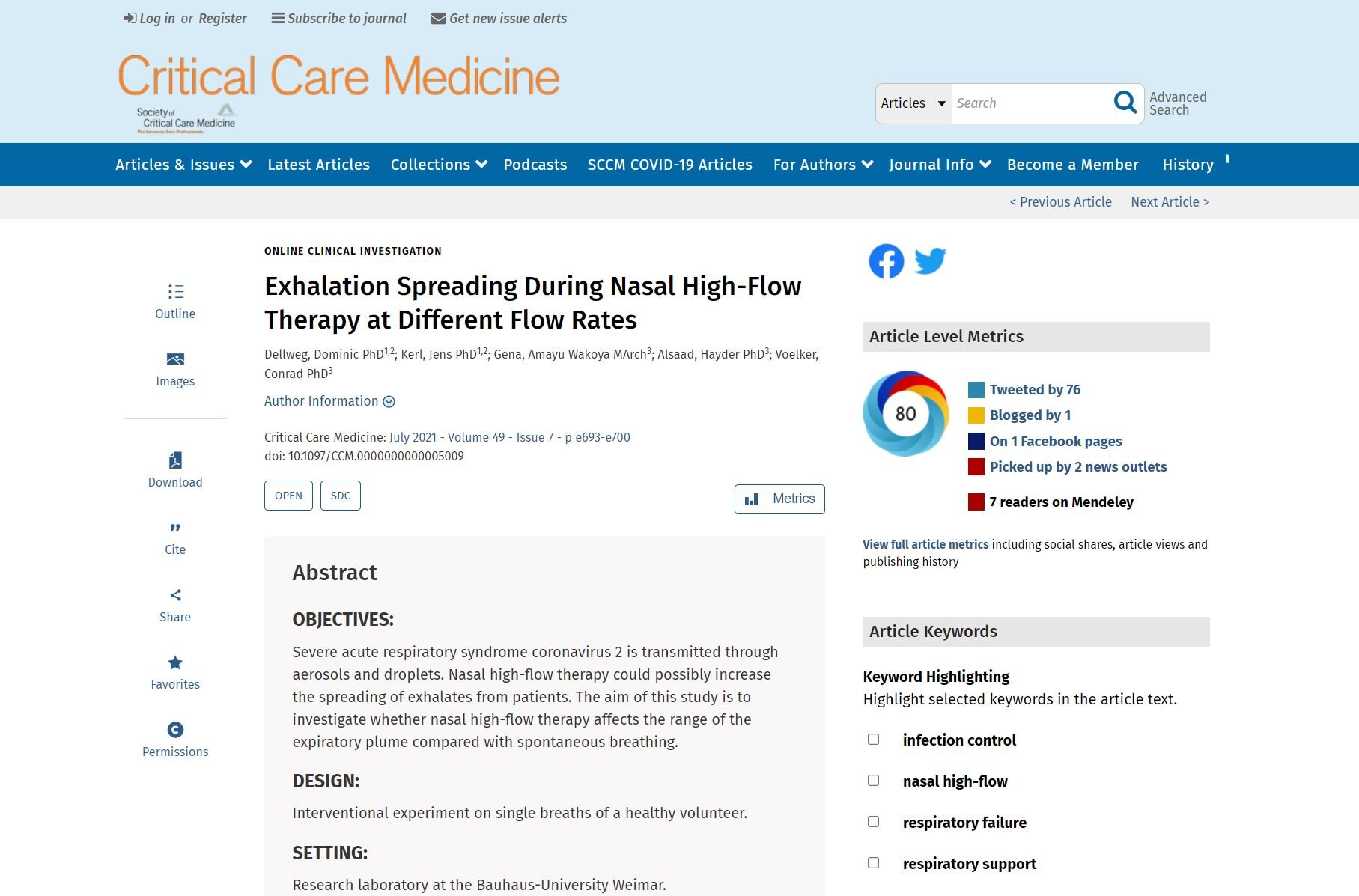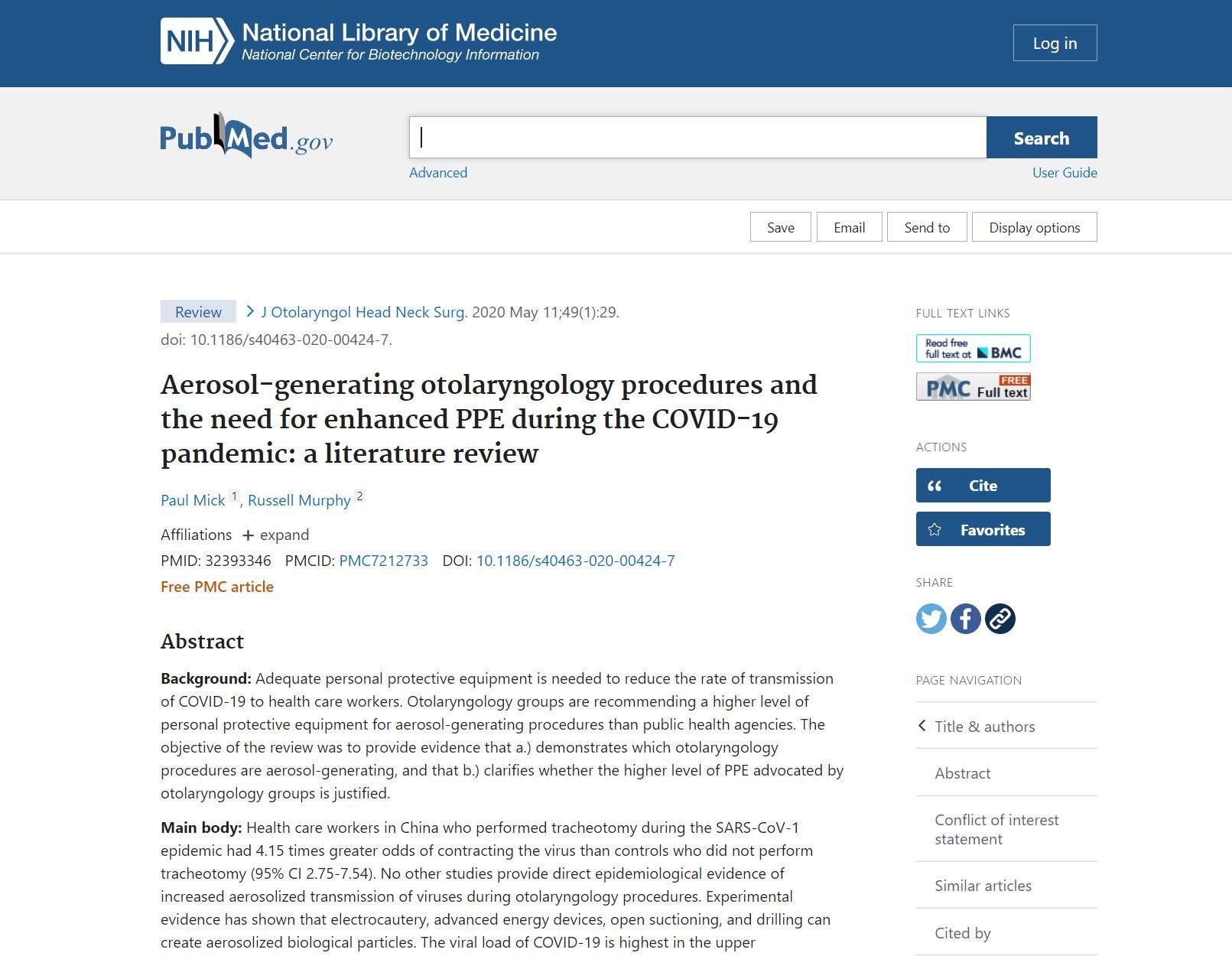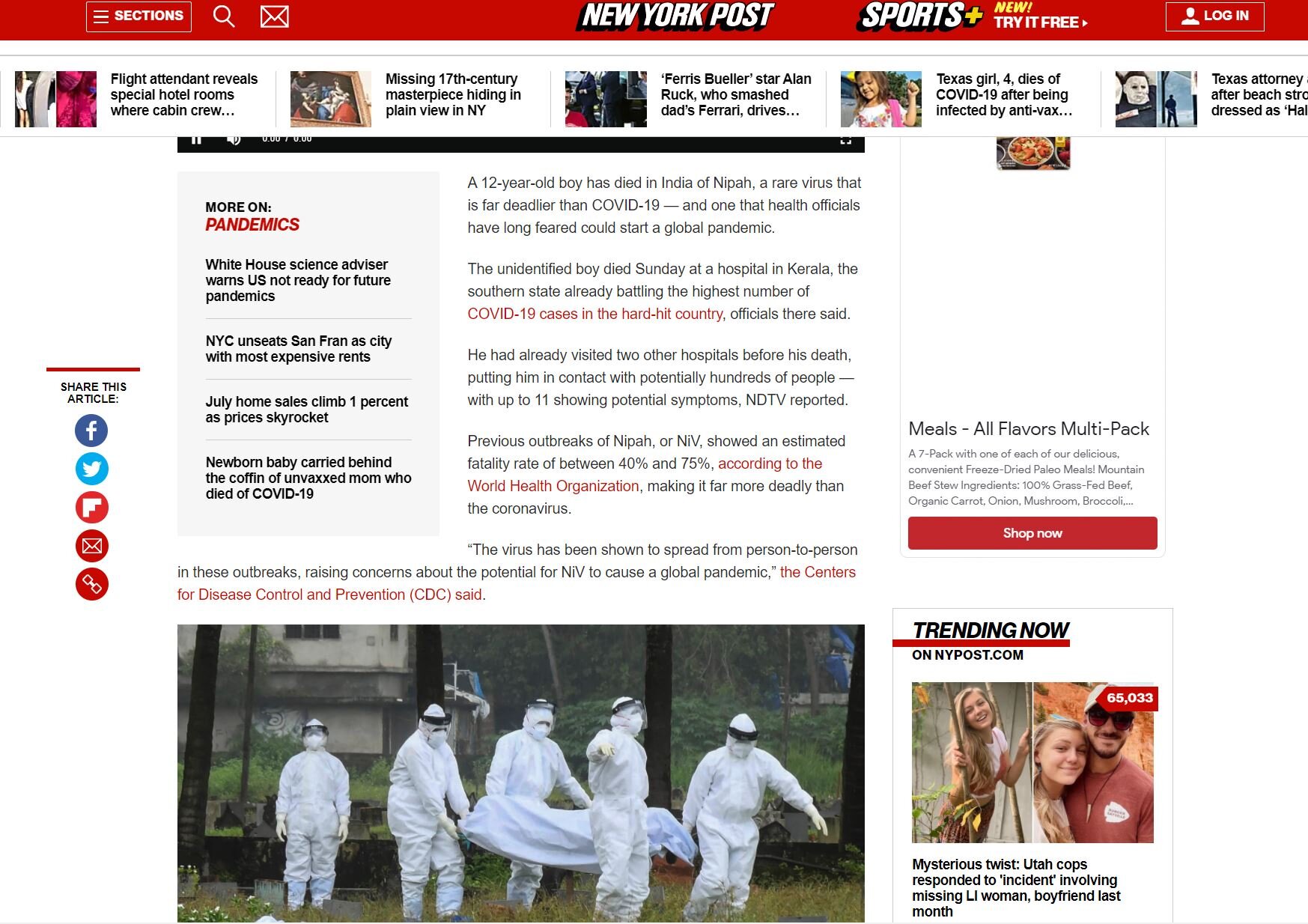
Pandemic Science & News
PANDEMIC SCIENCE
-
Critical Care Medicine 2021 Jul 1;49(7):1159-1168
Transmission of Severe Acute Respiratory Syndrome Coronavirus 1 and Severe Acute Respiratory Syndrome Coronavirus 2 During Aerosol-Generating Procedures in Critical Care: A Systematic Review and Meta-Analysis of Observational Studies
This review indicates that aerosolizing generating procedures such as intubation, noninvasive ventilation, and providing nebulizing treatments place health care workers at significant increased risk of contracting severe acute respiratory syndrome coronavirus 1 or severe acute respiratory syndrome coronavirus 2. While wearing personal protective equipment such as N-95 mask, gloves, and gowns significantly reduces the risk of transmission to health care workers, it does not eliminate it. As pointed out in the accompanying editorial, additional measures such as dispersing the aerosols during procedures may be helpful.
-
Critical Care Medicine: July 2021 - Volume 49 - Issue 7 - p e693-e700 doi: 10.1097/CCM.0000000000005009
Exhalation Spreading During Nasal High-Flow Therapy at Different Flow Rates
Use of High Flow Nasal Cannula (HFNC) is valuable in the use of treating hypoxic respiratory failure. However, since COVID 19 is spread through respiratory droplets, this study examines the exhalation plumes created by volunteers undergoing HFNC use. Using sophisticated imaging equipment, the authors demonstrated that exhalation plumes can extend greater than 4 meters from the patient making viral transmission concerning for health care providers in the same room. Covering the subject’s face with a surgical mask greatly reduced the plume.
Practical Caveat from AeroSolve: In practice, use of mask coverings can be difficult do to patient comfort and compliance especially when patients require facial care, need to drink, eat, etc. Also since HFNC effectiveness is based in part on its “washout” effect, uses of a facial mask could compromise this.
-
Journal of Otolaryngology Head and Neck Surgery 2020 May 11;49(1):29
Aerosol-generating otolaryngology procedures and the need for enhanced PPE during the COVID-19 pandemic: a literature review
Otolaryngologists are likely to be at higher risk contracting COVID-19 during procedures such as tracheostomy and others given use of electrocautery and other tools that increase aerosolization. Risk is even increased in outpatient setting given patient coughing and breathing with the practitioner being so close to the aerodigestive system of the patient. Further research is warranted on developing means to quantify and reduce risk.
PANDEMIC NEWS
The Washington Post - Sept 22nd, 2021
Hospitals overwhelmed by COVID are turning to "crisis standards of care." What does that mean?
Some places have adopted statewide crisis standards of care, in which health systems can prioritize patients for scarce resources — based largely on their likelihood of survival — and even deny treatment.
Jama Network - Sept 7th, 2021
Covering Tracheostomies Reduces Viral Spread to Health Care Staff.
Deadline - Sept 21st, 2021
New variant with mutations that show evidence of reduced neutralization by convalescent and postvaccination sera. Another mutation seen in R.1 might reduce the effectiveness of neutralizing antibodies.
New York Post - Sept 7th, 2021
India fighting to contain Nipah, a virus deadlier than COVID-19.
FOX News - Sept 13th, 2021
NY Hospital puts baby deliveries on hold as maternity workers quit over COVID-19 vaccine mandate.
New York Times - Aug 3rd, 2021
Is the Delta Variant Making Younger Adults ‘Sicker, Quicker’?
American Association for Respiratory Care - June 9th, 2021
Pandemic Life: To Nebulize, or Not to Nebulize?
Article from American Association of Respiratory Care outlines debate and varying practices regarding using standard nebulization therapies for patients with COVID. Practice is variable across hospital systems indicating continued concerns for safety given nebulization is considered an aerosolizing procedure and thus may increase risk of virus transmission to health care worker.
Inspire Commentary: Clearly many patients needing nebulization therapy are not getting them because of concerns of COVID-19 transmission. Use of Aerosolve products would allow safe and widespread administration nebulization and other aerosolizing procedures without concern for transmission even in setting of no negative pressure room since it contains aerosol and provide up to 50X more air exchanges than a negative pressure room.










